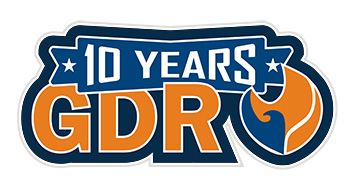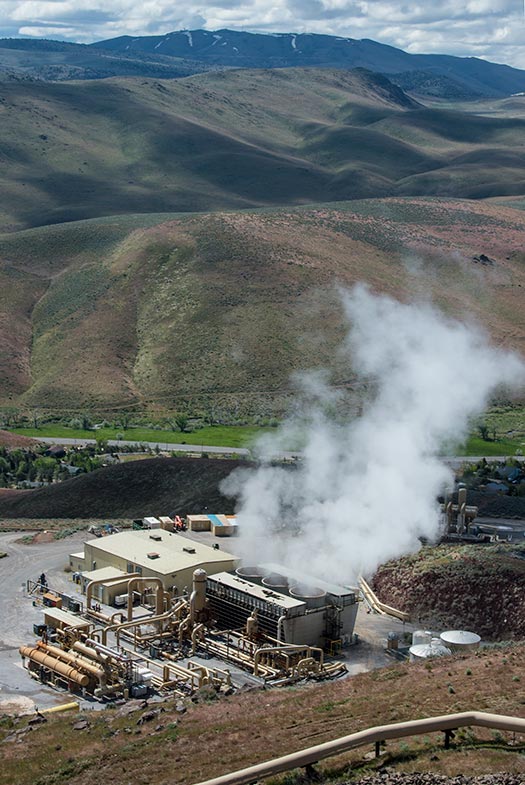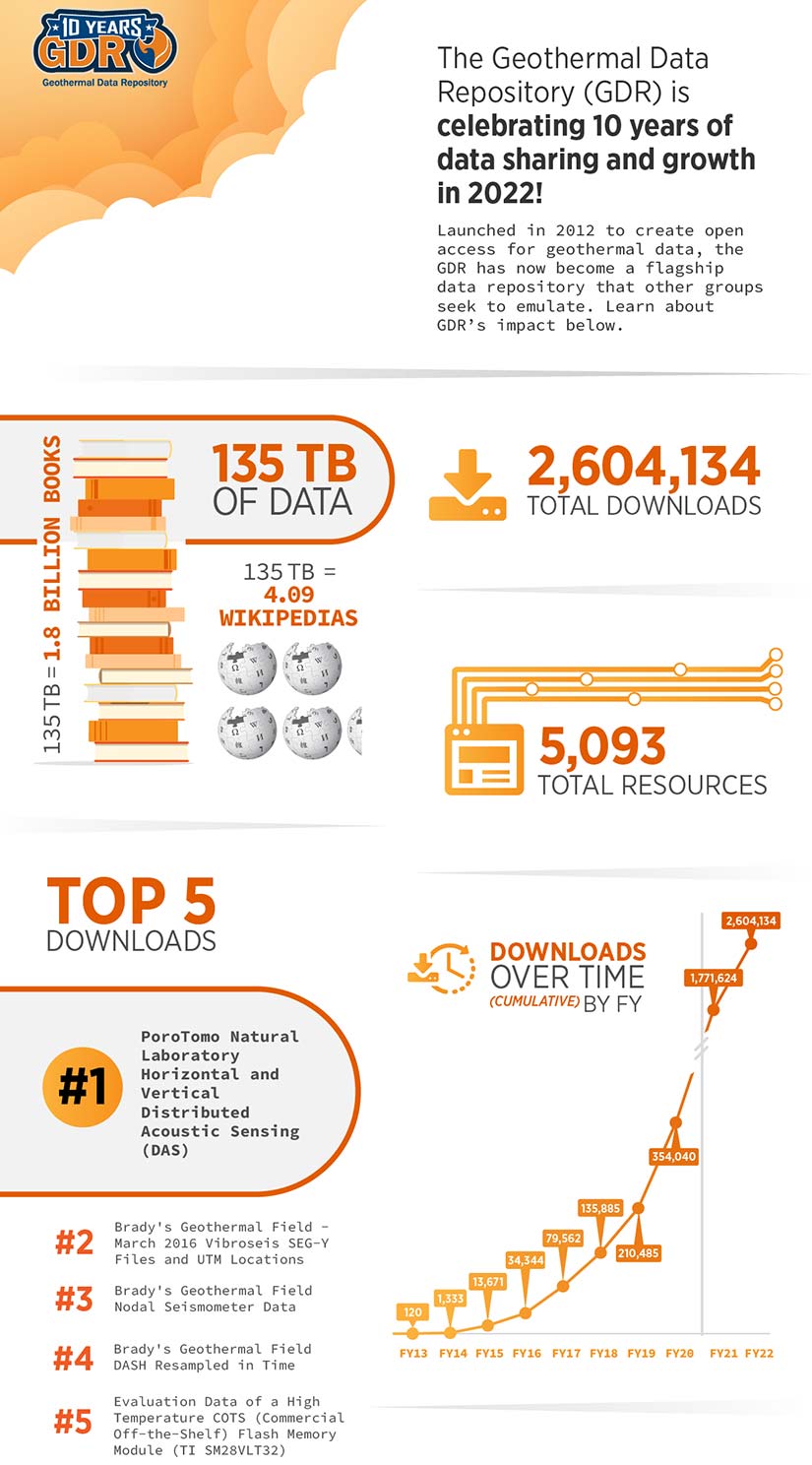10 Years of Industry-Changing Influence
The Geothermal Data Repository celebrates a double-digit milestone

Over 10 years and more than 2.6 million downloads later, the Department of Energy's (DOE's) Geothermal Data Repository (GDR) has taken the geothermal field from siloed science to becoming an industry leader in the open data movement.
Origin Story
What started as a simple data hub in 2012 has turned into an invaluable repository for information and innovation at the heart of the geothermal industry.
"Before the GDR, geothermal scientists stored their data privately, potentially duplicating efforts and blocking discoveries," said Jon Weers, GDR co-creator and lead data systems architect at the National Renewable Energy Laboratory (NREL). "Ten years after its launch, the support and ideas scientists collectively shared have turned the GDR into the groundbreaking tool it is today."
He adds that the entire geothermal scientific community truly deserves appreciation for its success. The support and ideas scientists collectively shared have guided the development of the GDR into the tool it is today.

Look Out, Wikipedia
Organizations across the globe now upload their geothermal data into the repository for anyone to freely access. The GDR also syncs with hundreds of scientific search engines, ensuring geothermal data is easy to find. As of 2022, the GDR is home to 5,093 resources from 74 different organizations and over 135 terabytes of data—more than four times the size of Wikipedia.
There have been more than 2.6 million downloads from the GDR to date, but the volume of downloads may not even be what leads to the biggest impact. One of the many GDR success stories over the years was the time that just two downloads turned into millions of dollars in funding.
"A bank in Europe used the GDR to download information that later led to successful underwriting for construction of a renewable energy, zero-emission, geothermal powerplant," Weers said. "That data would have been much harder to find without the repository."
Open Data, Open Doors
The GDR is also leveling the playing field and creating more trust in global data sharing.
"Previously, you had to have some sort of supercomputer on premises to even play with certain geothermal data," he said. "By providing universal, cloud-based access to geothermal data, the GDR has opened the door for DOE to collaborate with smaller universities and high school students, underprivileged communities, and startup companies. It's leading to entirely new sources of innovation."
Weers and fellow NREL colleagues Arlene Anderson and Nicole Taverna reported in the GDR 10-year anniversary report how the repository maintains its momentum by protecting DOE research investments and ensuring consistent open access, making collaborative data sharing easier, and preserving data by unburdening the entire submission and management process.
DOE strategic plans have stated, "Success should be measured not when a project is completed or an experiment is concluded, but when scientific and technical information is disseminated."
"I love that quote because it's basically saying you're not done unless you've told somebody about it," Weers said. "Submitting data to the GDR is like publishing in 25 journals all at once. It's a great way to get your work out there in front of the entire scientific community."

For more information on the latest geothermal research and opportunities, visit Energy.gov or the Geothermal Research page on NREL.gov.
This article has been updated to reflect an editorial change made after its original publication.
Last Updated May 28, 2025
